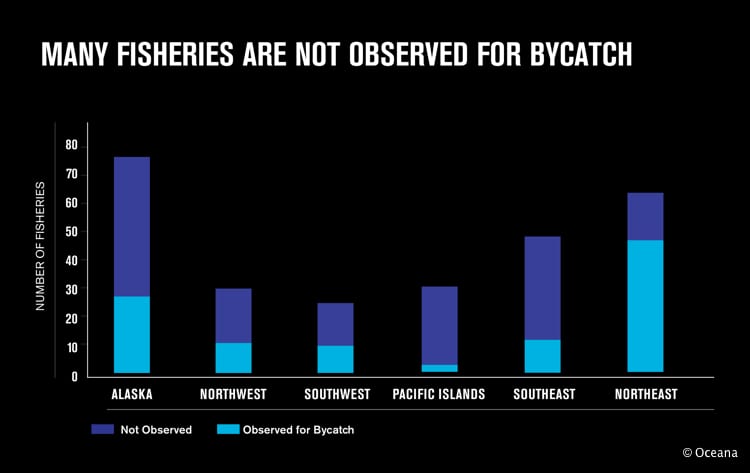Fishery Observers: Eyes on the Ocean
Monitoring Discards and Improving Bycatch Estimates
Collecting bycatch data is critical to sustainable fisheries management. Trained individuals, known as observers, are often assigned to ride along on fishing trips and document the composition and weight of the actual catch brought on board. However, estimating bycatch is challenging because federal, state and regional fishery managers do not often require enough monitoring to know how many fish are caught and subsequently discarded.
Even though increasing observer coverage throughout U.S. fisheries has been a priority for decades, coverage in U.S. fisheries is often less than 1 percent of fishing trips. To accurately estimate bycatch, fisheries must have a minimum of 20 percent coverage, with higher coverage for fisheries more likely to encounter rare or endangered species. Unfortunately, only 4 percent of bycatch estimates in the government’s 2016 National Bycatch Report were derived from what the federal government considers the “highest quality” data, according to several criteria.
To understand the full scope of bycatch, fisheries managers and the public must have access to recent, accurate and precise reports of catch in every fishery. The law requires that every fishery establish a Standardized Bycatch Reporting Methodology to collect, process, analyze and publish this information to identify and assess bycatch problems. All vessels must be required to provide accurate bycatch estimates, and the fishing industry should assume responsibility for funding monitoring costs.




